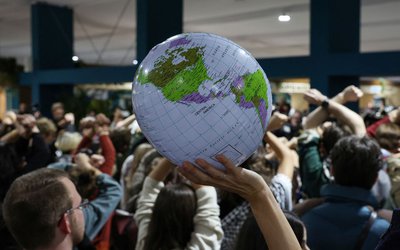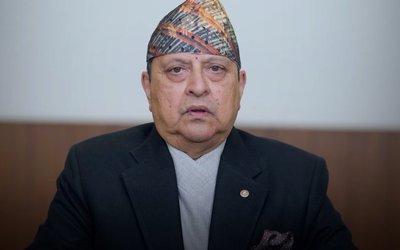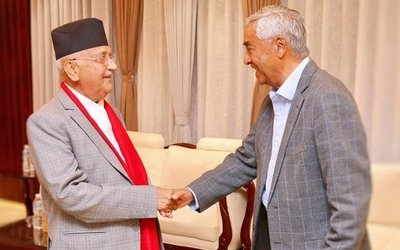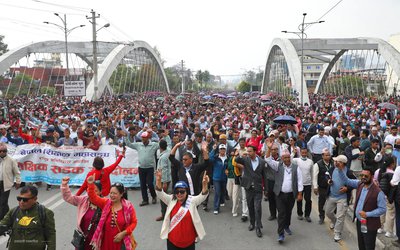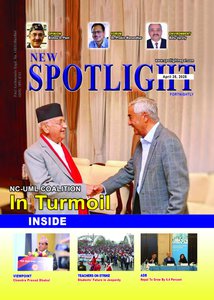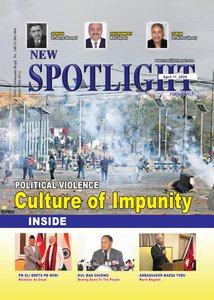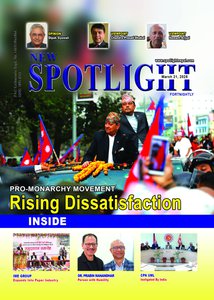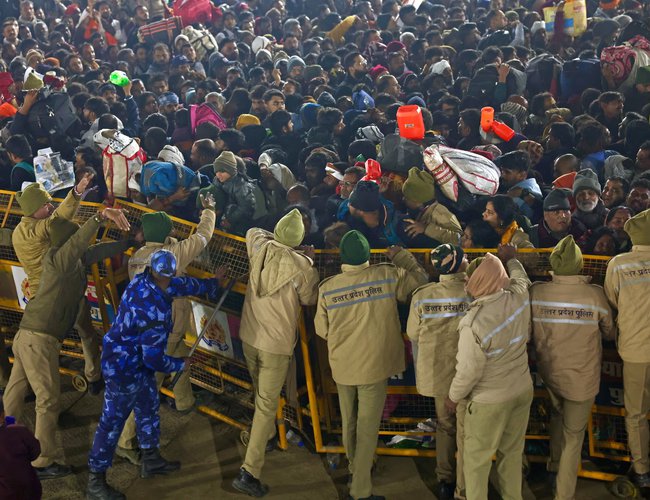
The Maha Kumbh Mela of Prayagraj is coming to an end. In the last two months, devotees, tourists, leaders, enthusiasts, seekers, traders, and scholars, all in about 500 million and more, have travelled to the juncture of Ganga, Yamuna and mythological Saraswati to take a dip in the holy river. Kumbh Mela represents not just one of the largest human gatherings the world has ever seen but also has different underlying importance in the realms of religion, social milieu, trade, economy, and, finally, the South Asian cultural landscape. Through this article, we will delve into the much less explored terrains and how significant the Kumbh’s impact on the South Asian cultural landscape is.
Kumbh Mela, dating back to ancient times, is rooted in the collective spiritual tradition of the Indian subcontinent. The massive participation of pilgrims from Nepal and Bhutan focuses attention on the festival as a religious and cultural bridge, reaffirming age-old ties cutting across political divides. The confluence of seers, monks, and pilgrims from the two neighbouring countries on the sacred riverbanks signals a revival of civilisational relations.Valuing its deep cultural and spiritual significance, UNESCO declared the Kumbh Mela in 2017 an Intangible Cultural Heritage of Humanity. The declaration provides value to the contribution it has made in maintaining and evolving a unique tradition of spirituality, uniting different groups of individuals across communities and generations. The UN declaration also raises Kumbh's contribution to affirming localised identities and enabling interconnectedness among South Asia regions.
Nepal, a country with deep Hindu roots, and Bhutan, a predominantly Buddhist nation, both speak of the religious importance of the Kumbh. The participation of spiritual leaders from both countries facilitates easier interaction and understanding, enabling a platform where common heritage is celebrated and not divided. The involvement of Bhutanese monks in the rituals speaks of the manner in which Indic religious practice has syncretised disparate cultures across centuries. This serves to reinforce the fact that South Asia's cultural fabric is highly interconnected through religious belief, tradition, and spirituality.Historically, Nepalese monarchs and intellectuals have had close connections with Indian seers, and Nepal's religious scriptures reflect profound connections with the traditions revered at Kumbh. Likewise, Bhutan's spiritual heritage, shaped by Mahayana Buddhist traditions, reflects a convergence with the contemplative and philosophical discussions occurring at the Mela. Such interactions at the civilisational level strengthen the Kumbh Mela as a platform for the revival and nourishment of ancient knowledge-sharing practices.
Kumbh Mela has also increasingly been a platform for cultural diplomacy. Indian involvement through this festival promotes regional integration by emphasising common cultural traits. The presence of high-profile leaders, including the King of Bhutan, is indicative of the importance of Kumbh as a soft power instrument, creating unity and interdependence. This interaction creates personal relationships, which are critical to diplomatic relations.A number of countries see Kumbh Mela as a bridge connecting past foundations and present-day cultural diplomacy. Indian governments have utilised the festival as a platform to promote dialogue and strengthen diplomatic relationships, demonstrating the potential of cultural heritage as a powerful tool to construct peaceful cooperation.
With increasing foreign involvement, Kumbh is also an economic and tourism driver. Pilgrims and travellers from Nepal, Bhutan, and other South Asian nations inject money into local economies, boosting cross-border cultural exchange. The inflow of tourists leads to expanded trade, jobs, and cultural exchange, further integrating South Asia economically and socially. It is also important to outline that, the foreign tourists who are coming from Western countries predominantly go to Nepal and Bhutan after their pilgrimage at Kumbh as the Kumbh 2025 happening in Prayagraj is relatively closer to Kathmandu and Thimphu. In recent years, the government has also invested heavily in developing infrastructure near Kumbh locations, offering more comfortable facilities and accommodations. All these developments benefit not only domestic Indian travellers but also foreign pilgrims, the majority of whom undertake long spiritual pilgrimages to make the journey. Additionally, increased tourism benefits handicraft sales, religious souvenirs, and local enterprises, rendering Kumbh an economic powerhouse for the region.
In the age of geopolitical rivalries, cultural festivals like the Kumbh Mela are a manifestation of the deep historical and spiritual ties that bind the countries of South Asia together. The festival's ability to bring people from various countries together is a testament to its strength as a symbol of regional unity, redefining the cultural and civilisational ties in the region. The Kumbh Mela is not merely a religious festival; it is a living manifestation of the shared heritage of South Asia, reasserting a shared cultural identity that transcends political divisions.The designation of Kumbh Mela as a UNESCO Intangible Cultural Heritage and its role as a diplomatic and economic bridge are transforming the cultural landscape of South Asia. Its ability to unite Nepalis, Bhutanese, and other local people ensures its significance in the collective spiritual and cultural memory of the region in the years to come. In the years to come, the festival is sure to be a crucial part of South Asia's heritage, promoting peace, harmony, and interconnectedness.
*Harsh Pandey is a PhD Candidate at the School of International Studies, JNU, New Delhi
- India’s Aid to Nepal Needs Immediate Attention
- Mar 14, 2025
- An Assessment of China-Nepal Economic Engagements
- Jun 02, 2024




